Time to read: 8 min
Back in the 1990’s, virtual reality (VR) was a big thing. The next big thing, the media sang enthralled. Trouble was, the technology infrastructure wasn’t built out to allow any sort of appreciable user base to develop, and so VR stayed on the fringes, its tentative flames kept alive by a small contingent of diehard believers. Until today.
Google, Facebook, Samsung, Microsoft and many other players are furiously developing VR viewers—and many more content producers are working on the media that those viewers will deliver to what they all hope will be billions of thrilled customers.
We sit down with Patrick Buckley, co-founder and head of product at DODOcase.com, the creator of the SMARTvr viewer, to talk shop, turf wars, and visions of a brave new virtual world.
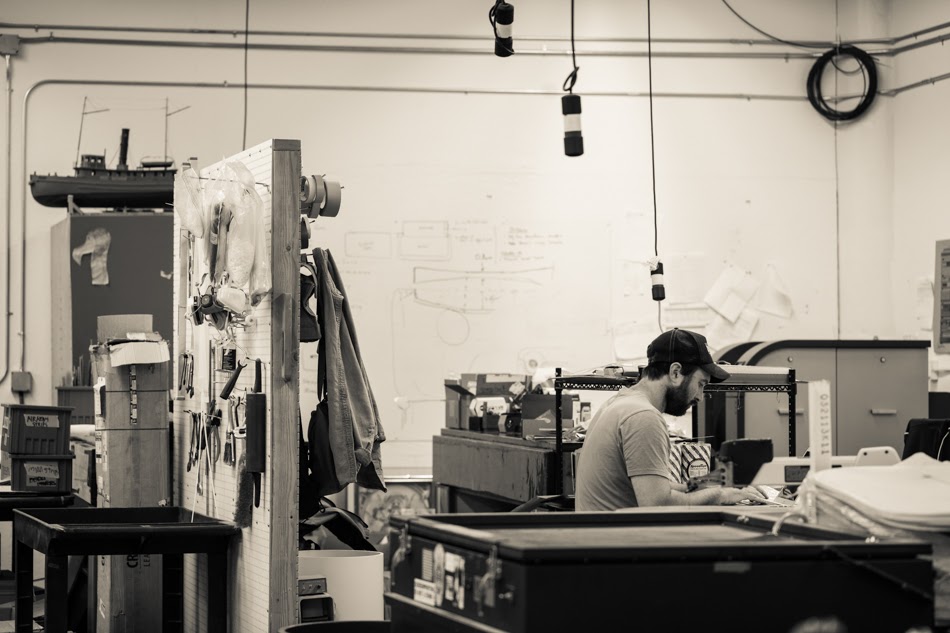
Lightweight vs heavyweight VR
It’s great that a company as large as Google has invested in VR, but what’s with all those cardboard viewers it was working on a few years back? “Google did that as a handout at their io conference in 2014 to demonstrate how Android could be used for lightweight VR experiences,” says Patrick.
Wait, what’s “lightweight” VR? Didn’t Facebook recently spend $2 billion to acquire Oculus—how is that lightweight?
First off, explains Patrick, “VR is very different from 3D movies. With VR you can turn around and look in every direction. It’s an interactive form of video that allows you to navigate yourself—literally—through the scene. But that requires a heavy-duty set-up, like the Oculus Rift. With a VR-enabled smartphone, you can only pivot from a single physical point, you cannot physically walk through a scene. The closest you can come to that with the smartphone is to tap on icons on the screen that simulate that kind of movement.”
So mobile-enabled VR is lightweight, while the VR headsets tethered to powerful computer systems (like the Oculus Rift or the HTC Vibe) is the heavyweight version. Got it.
Price point-wise, lightweight VR devices cost less than their souped-up counterparts, which can run between $500 to $800. DODOcase’s SMARTvr viewer will run you under $40.

Great, but does VR have legs to stand on?
Second wave notwithstanding, we’re still in the very early days of this technology, and, like so many other hot electronic playthings, VR could go either way: take off and change the world forever the way the Internet did, or crash and burn like 3D TV.
But DODOcase, whose very name references the dangers of extinction, is bullish on VR.
“The first wave of VR was overhyped,” says Patrick. “It was too early then for VR to take root. The technology base–things like computer speeds, bandwidth and devices—just wasn’t there.” The analogy Patrick makes is between the PC and the Internet router on the one hand, and the smartphone and VR on the other. “Before the Internet could really take off, we needed a massive installation base of people with personal computers,” he says. “Same thing applies to VR. The smartphone is to VR what the PC was to the Internet. Today, there are almost 2 billion smartphones in the world, and that’s why VR is now possible. It’s a whole new media category.”
DODOcase was the first company to sell a kit for the cardboard viewers Google had developed. “Google released the blueprints, but to make it yourself was difficult,” says Patrick. “So we figured out how to do it and offered to ship it to customers in six weeks. A lot of people loved the idea of using your smartphone to view VR, and the cardboard viewers were a great first step. Cardboard is so hackable, that even in the early prototyping phases of SMARTvr we used cardboard, trying different forms and designs.”
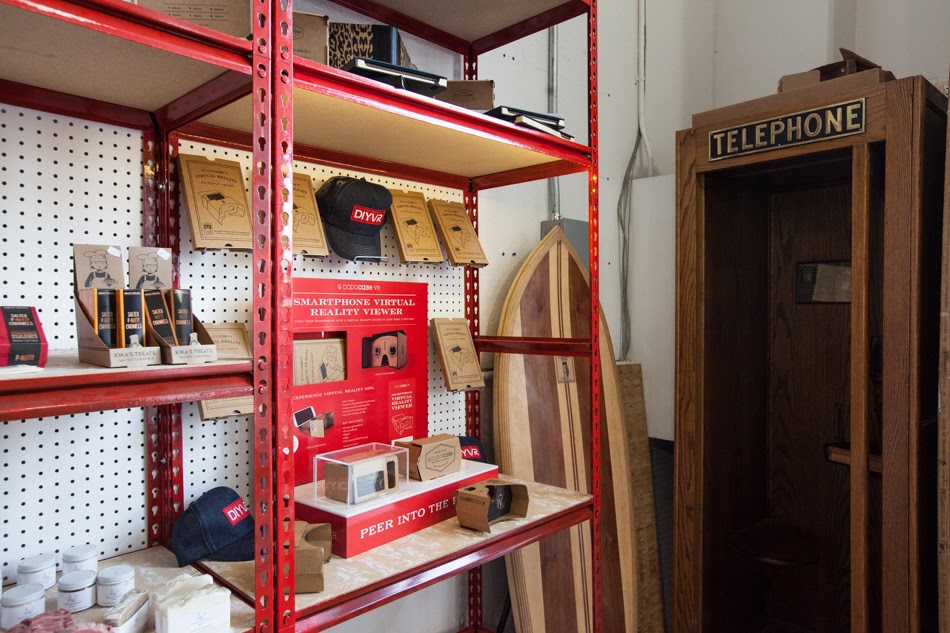
Over the next year and a half, DODOcase watched the market evolve—and went right along with it. “We developed our SMARTvr viewer because people started asking for something more durable, portable.”
VR R&D: what do users really want?
We ask DODOcase how they approached R&D to assess what people want out of the VR experience—and what they don’t.
“We went to a lot of trade shows and events where we demoed our viewer,” shares Patrick, “and we’d watch people use it. We also had a lot of discussions with our strategic partners, the people who make VR content, about how can they get it into the world in a better way. We discovered that it was difficult to share and demo VR experiences for both users and content makers, given how much friction existed with current VR devices. And that was holding back the market. So we focused on making the most shareable VR device for users and content makers possible.”
Patrick shows us the SMARTvr’s cover as an example of the kind of results their R&D produced. “Our viewer is custom-printable, so you can brand it. That’s really important for content makers.”
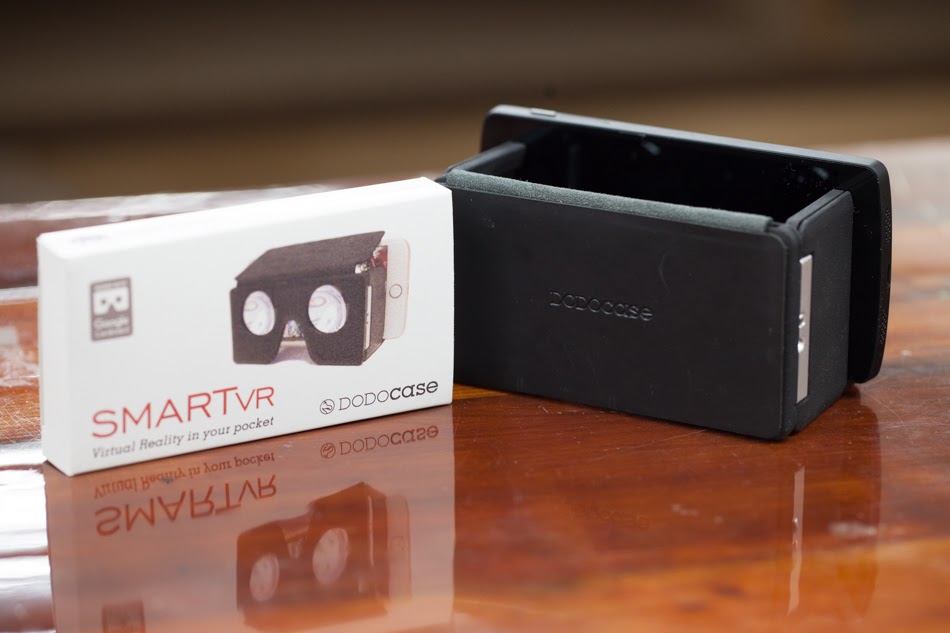
He adds that what users and content creators want differ in the following key areas:
Users
- Portability: people want to be able to show off their new cool VR experiences to friends and family, which is difficult with a VR system that’s wired to a desktop computer
- Value: people want affordable devices so they can try VR before investing $1000+ in a high end system
Content Creators
- Reach: a universal device (namely, a VR viewer that works with any smartphone) enables much larger audiences than viewers that work only with specific cell phone models, or expensive VR devices
- Branding: it’s critical to have their brand associated/displayed on the viewer
One thing that surprised Patrick was how long the product development took for this viewer. “This is the longest product incubation we’ve ever done,” he tells us. “It’ll be about a year by the time we ship the viewers this June. With our other products, we designed and manufactured them in our own factory so we could make changes quickly, but in the case of SMARTvr we had to think about things like our tooling, transit back and forth between us and our vendors, and anything else that took the product physically out of our hands, like the cast aluminum and injection molded plastic.”
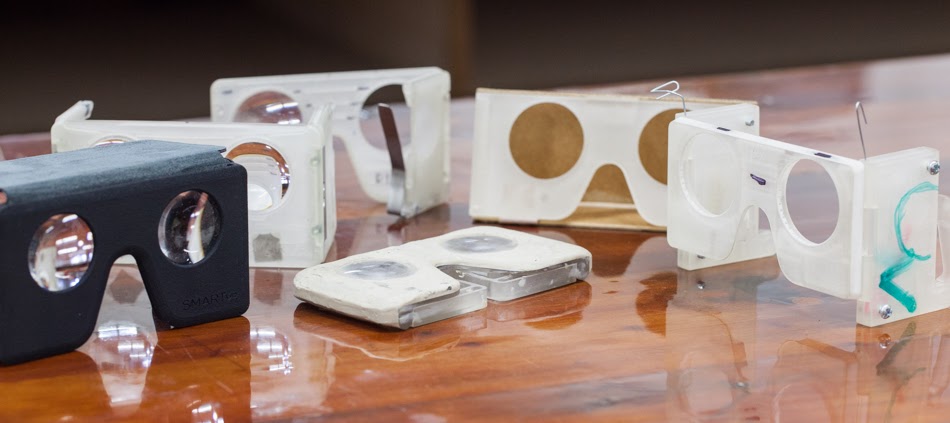
Make and model, please
SMARTvr’s sleek design and functionality puts it right there with all the other high-tech gadgets you can proudly show off. And actually use. Ballistic glass-filled nylon (the type the military uses) makes the viewer highly durable, so you can—although we don’t recommend it—sit on it, step on it, and probably drive over it, too. Accidentally, of course.
The hinges are made of cast aluminum and sport holes that allow a nylon cord to slip through so you can wear it on a lanyard. Or you can just close it and put it in your pocket; the micro-suede cover doubles as a lens protector (when closed) and a light shade (when open and locked onto your smartphone). The lenses are PMMA plastic, an acrylic plastic used for eyewear.
“We first explored the form factor,” shares Patrick. “Then we worked on the design and explored different ways of marrying form and function. For design, we looked for inspiration in luxury items that fit into people’s pockets, like fancy pens or eyeglasses—we wanted to convey a certain fashion conscience.”
Still more important is SMARTvr’s universality. Unlike other viewers (cough, cough Samsung), SMARTvr fits any smartphone that’s between 6mm and 12.5mm thick—and that range includes whatever case your phone might be wearing.
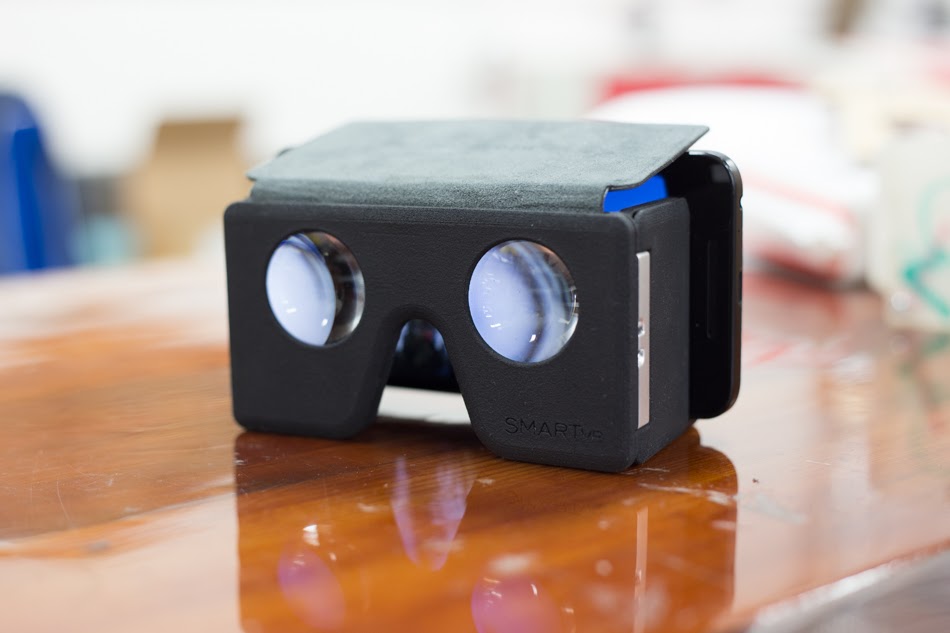
So how does it work? Simple, says Patrick. “It’s like a pair of glasses. Clip your phone in, make sure the screen is centered, and you’re good to go. For us, it’s all about the user experience.”
But does it come with instructions?
“A lot of companies have funded the education of VR,” Patrick adds, explaining his company is benefitting from the overall budding, increasingly intertwined VR ecosystem. “They’ll brand the viewers with their logos and hand them out to people at events and trade shows, which familiarizes people with these sets and teaches them how to use the viewers with their smartphones. So now, anyone with a smartphone is a potential audience.” And a potential customer for SMARTvr.
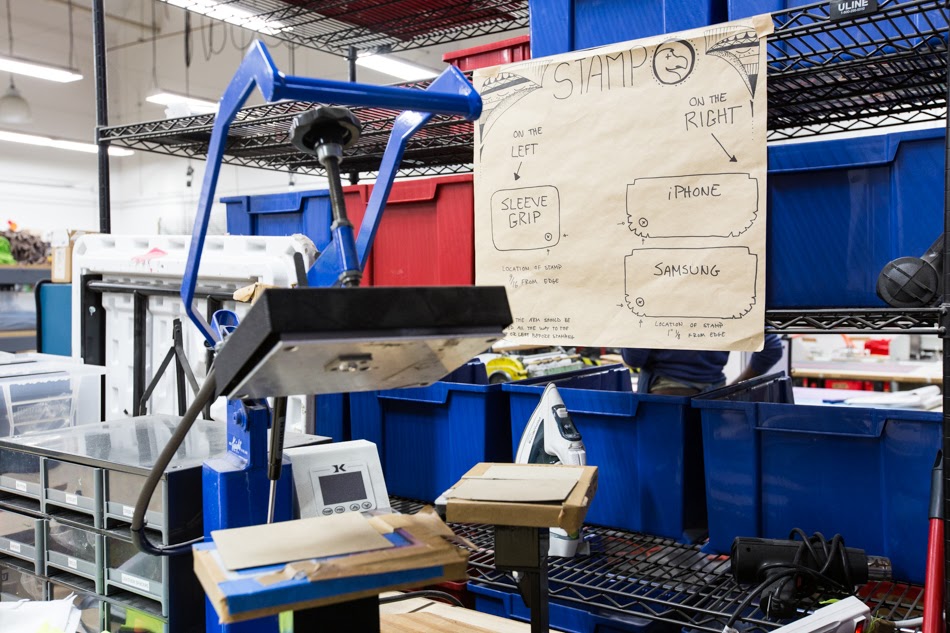
But that’s not what really excites Patrick. It’s the sea change he and others in this nascent market see. “There are so many ways that [VR] will change the world we live in,” he enthuses. “If you tried, decades ago, to imagine how the Internet would impact people’s lives, you couldn’t possibly imagine everything people are doing today—creating communities, running their business online, even expressing their love for each other (through emojis and apps). You’ll see that kind of shift with VR. People have already studied the use of VR for psychological conditions like OCD, PTSD, and fear or anxiety of whatever kind. VR will revolutionize medical imaging. In journalism, a lot of people say it’s powerful for creating empathy. The New York Times has created a VR app to see how it can be used for journalism… so you can get a better sense, a more immediate, direct sense of a story or situation that goes much deeper than if you just read about it. It has potential for everything, from storytelling and entertainment to architecture and mechanical design. And oh yeah, social interactions.”
Heady stuff indeed. All that brings us to the inevitable question: are we going to walk off cliffs while stuck in some dreamy VR landscape? Is VR safe?
Be not a digital lemming
“Obviously,” says Patrick, “You should not be doing VR when you’re driving. But with the heavyweight systems, you’re physically tethered to the computer so the likelihood of walking off cliffs isn’t very high. Although, I have seen warning labels on the strap-on systems because you can’t pull away from the viewer as easily as you can with a mobile device. With lightweight VR, you can just drop your hands and immediately see what’s around you. What’s more dangerous is the half in/half out digital world experience that we’re all living right now.”
You know what he’s referring to: texting while driving, watching videos on your mobile phone while taking a walk. But he agrees that as a category, “VR does have additional risks that have to be figured out.”
The battle for the new frontier
Where does SMARTvr fall within the spectrum of all the viewers now becoming available? And the bigger question still, who’s going to win the VR turf war?
Patrick carries that calm air of the unfazed smaller business confident about its track record and direction. “We see ourselves as the most accessible category of viewers. A lot of companies are trying to lock in their users because it’s going to be such a valuable new medium. The company that controls the way the content flows, wins. The mobile wars between iOS and Android have shown just how valuable the mobile platform is. And that’s precisely why we passionately believe in open sourcing VR.”
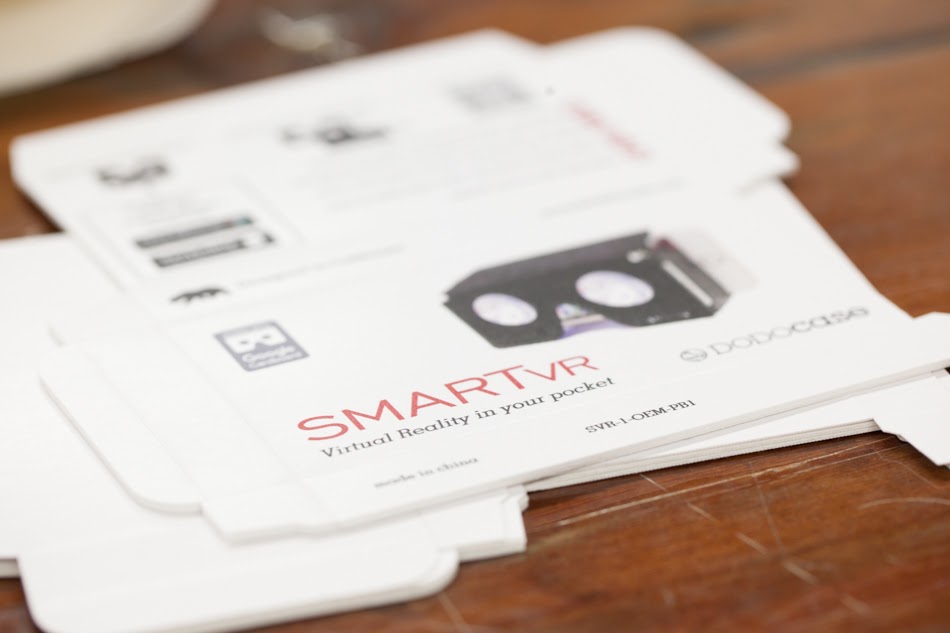
DODOcase is putting its feathers where its wings are, as it were. So much so that they drafted a manifesto about the relevance of keeping VR accessible to the public—check out the DIY VR Manifesto here.
“We’ve been pushing hard to make open source VR available for people,” says Patrick. “People should be able to put their own VR content online.”
Yes, it’s a whole new battle, Patrick agrees. He asks the billion-dollar question: who controls the VR app store?
“The [tech and media] world today has its pros and cons. There’s a lot of crap out there, that’s junkfood for your brain. But it also lowers the barriers to the good stuff, for all the talented content creators who have something meaningful to say. So if VR can develop based on open web technologies, there’s more of a hope the gatekeepers won’t be able to close it shut and keep it all for themselves.”










